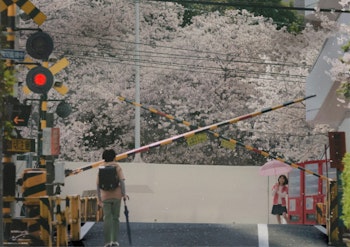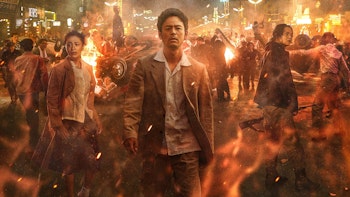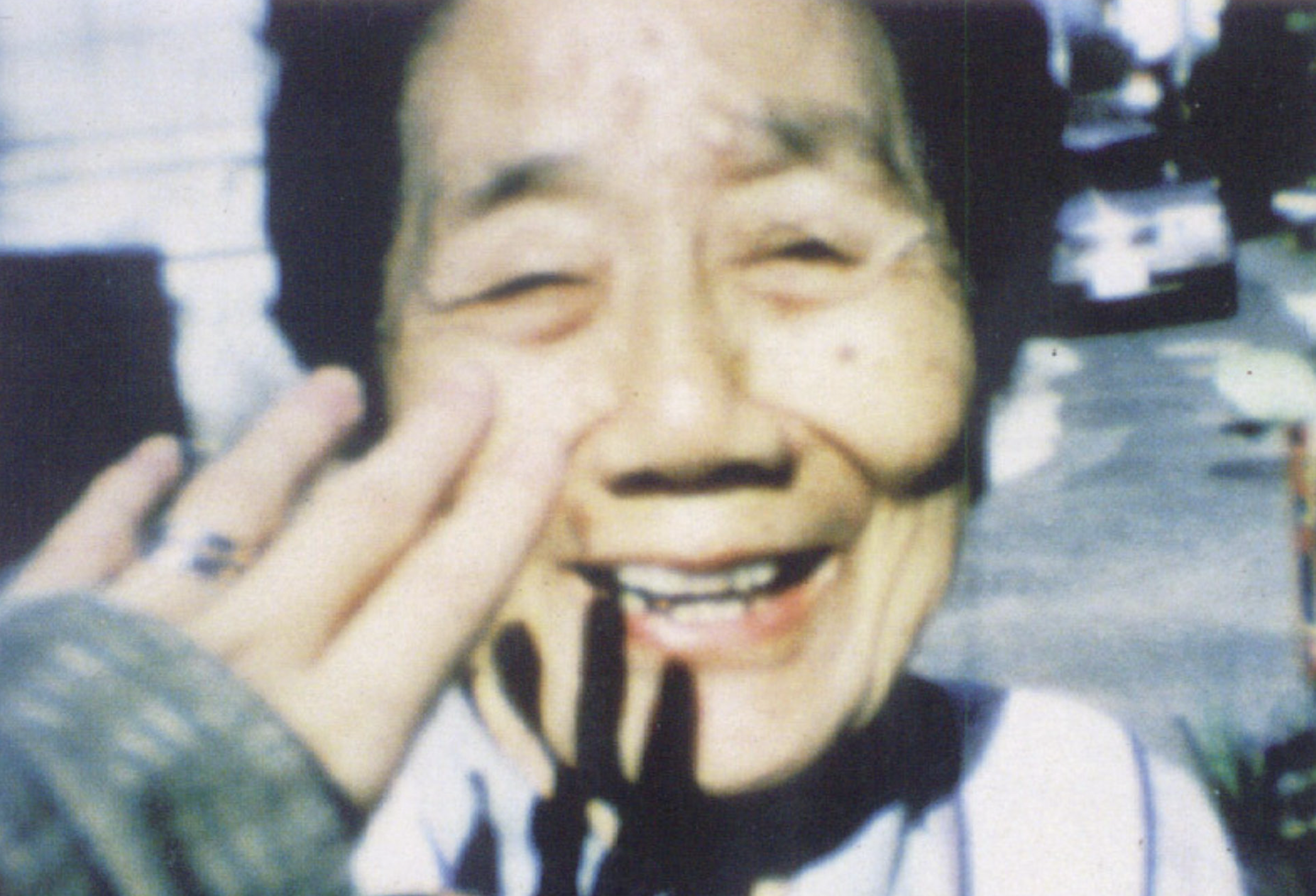
It’s difficult to know how to discuss Naomi Kawase’s work in 2025. Her family-driven documentary Katatsumori brought her to the attention of the film community just as she was graduating university and entering the industry. In 1997, her debut feature film Suzuka catapulted her to global recognition after become the youngest winner of the Camera D’Or at Cannes. Whether in these early documentaries or her fictional dramas, her focus has always been on capturing a raw humanity through observing the world around her.
Yet recent years have seen her dogged by scandals involving assaulting staff on set, a major factor in the underperformance of her expansive two-part theatrical documentary on the controversial 2020 Olympic Games. She stepped back from filmmaking in the intervening years as a result of the scrutiny from these events, though she has remained busy and employed on various projects. She’s been a senior advisor and one of a select group of six artists and professors producing Signature Pavilions for Expo 2025 centered on the event’s themes of imagining a future society.
It’s a chance to reintroduce herself on a global stage for the first time since the incident, even if her appearances at conferences for the event have meant she hasn’t been entirely absent from the public eye in the intervening years. After experiencing it for myself, I couldn’t help but reflect on how modest this new multi-sensory project was, taking just as much inspiration from the event’s prompt as it did on the red thread of fate connecting past, present and future via human connection. There’s an intimacy that’s impossible to ignore, connecting her earliest past with Katatsumori with this present and future.
Just 40 minutes in length, the movie is as much a documentary as it is a tribute to the great-aunt that raised her following the divorce of her parents. Rather than constructing a grand narrative it’s more emotion-driven, a non-linear series of vignettes with a loving lens peered into the mundanity of life for the woman who raised her into who she is today.
Indeed, it’s impressive how minimal and ordinary much of the film is, not quite a home film but enveloped in that same heart. Questions of what it means to find comfort compliment quaint scenes of Kawase's great-aunt, Uno Kawase, pruning plants through mesh screens in front of a window pane. It’s in this mundanity we find a closeness that can’t be captured with anything but a lens, or is only more apparent because a lens is forcing subject, filmmaker and the film itself to recognize the closeness we often take for granted.
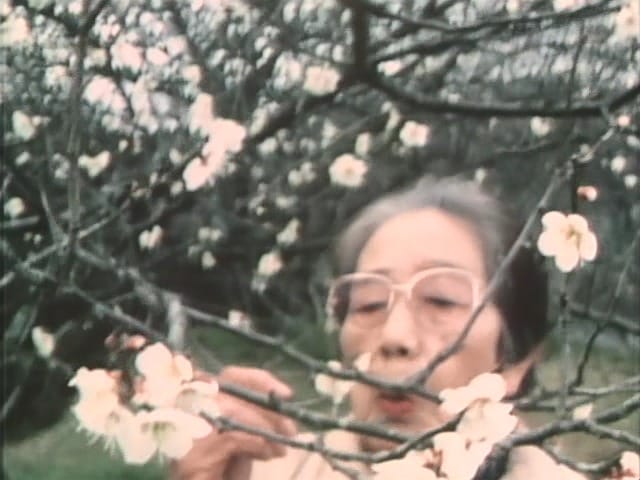
The camera comes voyeuristically, almost claustrophobically close to her Grandmother’s face, and yet her cries to stop recording are only spoken through laughs devoid of all but a recognition of the mutual love that makes the camera present in the first place. As though there’s no need, because the moment will last whether it is recorded in how the memory will shape them and stay with them regardless of physical record. The question becomes not ‘how is the love expressed between Kawase and her great-aunt’ but ‘what is love itself, in its purest form’.
Beyond that, it’s an experiment in filmmaking. We praise films for their humanity and authenticity, but the theatricality and precision required to capture what we perceive as authentic requires so much preparation that the spontaneity that defines our existence disappears. However unintentionally, it’s impossible to capture something truly natural when it requires such deliberate intent. But what if you could? Could the most natural recording ever feel and express the same love that exists within?
I'd argue no, but you can film the meaning and intent of that love. That’s what makes the forty insignificant minutes of Katatsumori special. The flaws and discomfort that only comes from genuine happiness and love, a love that only comes from the worry that it can and will eventually be cut away by the cruel never-ending procession of time. Once we realize the camera can only capture the desire of love rather than love itself, we notice the signs of its impending end. The wrinkles, the brittle skin at the end of fingers caressing the face on screen, because for the person behind the camera reaching out is the only way to confirm on video that this love exists.
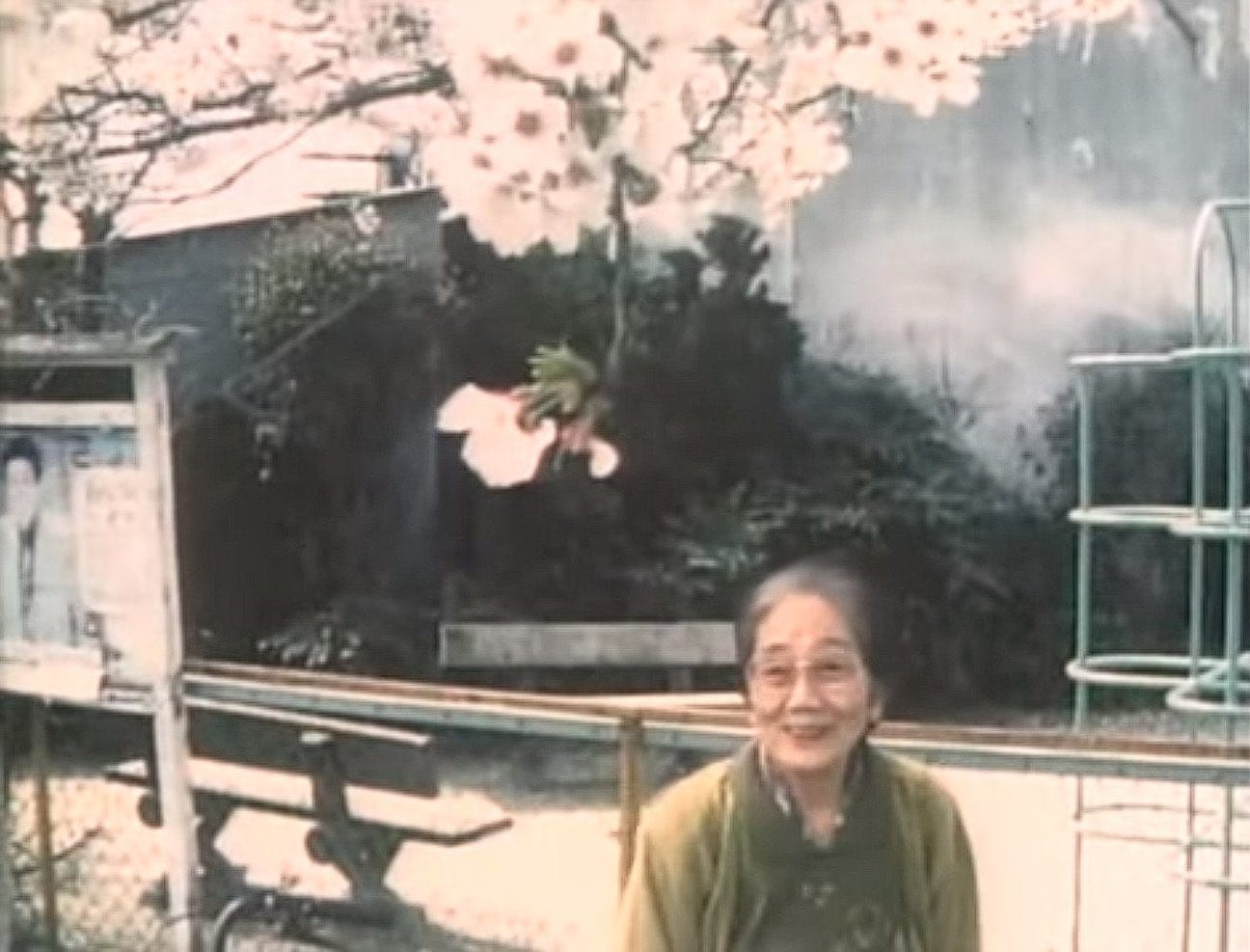
These acts take new meaning today. Capturing such tactile and human love in a video format becoming increasingly unreliable amidst an age of AI. In real life, as seen with Naomi Kawase reaching beyond the camera to touch her great-aunt, we can experience with our senses what can only be recreated with cameras and screens. If we know that love, it's real, and the hand confirms that. But for how much longer can a home video-like recording with such tender touch and love be accurate?
Which is why Katatsumori becomes such a fascinating full-circle moment when placed alongside the historic, presence of Kawase’s Expo 2025 pavilion. Where countries capture the richness of culture and their potential and corporations consider industrial revolution, signature and domestic potential are designed as commentary on what our future may look like. Of these, only Kawase’s pavilion looks at this future through the lens of the present and past, an exploration on how communication and emotional connections are key to a society finding cohesion as it progresses towards an unknown future.
Rather than crafting something new, the buildings housing her experience are reconstructed Showa-era school buildings, transported from across the Kansai region the Expo venue and rebuilt on-site. It makes the spaces feel lived-in. You can see the age and wear in the flooring, or on the blackboard in the waiting room.
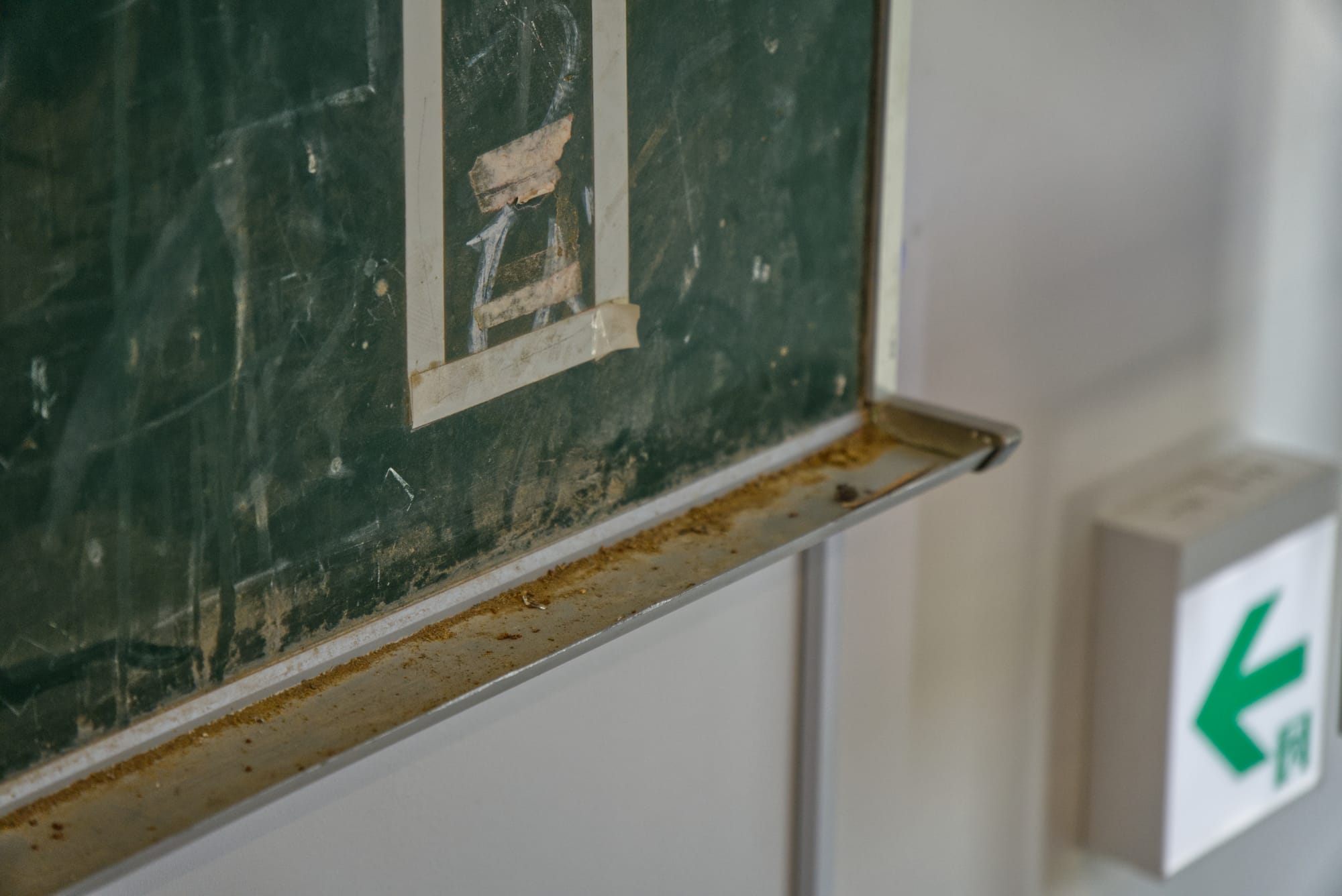
The intent of the pavilion is in the name. A Dialogue of Life refers to this disused school being the facilitating location for conversations between strangers, one inside the theater at a lectern and another on a large screen, discussing everyday or existential topics unscripted in front of an audience. The pair have never met. Cards are handed out to the audience prior to the show, designed to prompt further thought and to encourage people to discuss these topics with friends and strangers alike.
‘What would you not want to change even if you could live your life again?’ was the prompt on my visit. The pavilion is a fascinating idea that doesn’t entirely work in execution (more because the dialogue with new faces failed to occur, with many choosing to either explore the school or talk with friends and family instead), but it’s hard not to see where this idea links back to Katatsumori.
In these Dialogues of Life are attempts to find and capture a connection rooted in our history and emphasized by this school setting. The history of this discarded building revived in the present to consider our outlook for the future, all to forge the connections necessary for societies to evolve. If this is a modern, generalized look to the future, it's one built on ideas Naomi Kawase has explored throughout her career, with Katatsumori a personalized embodiment of this on film.
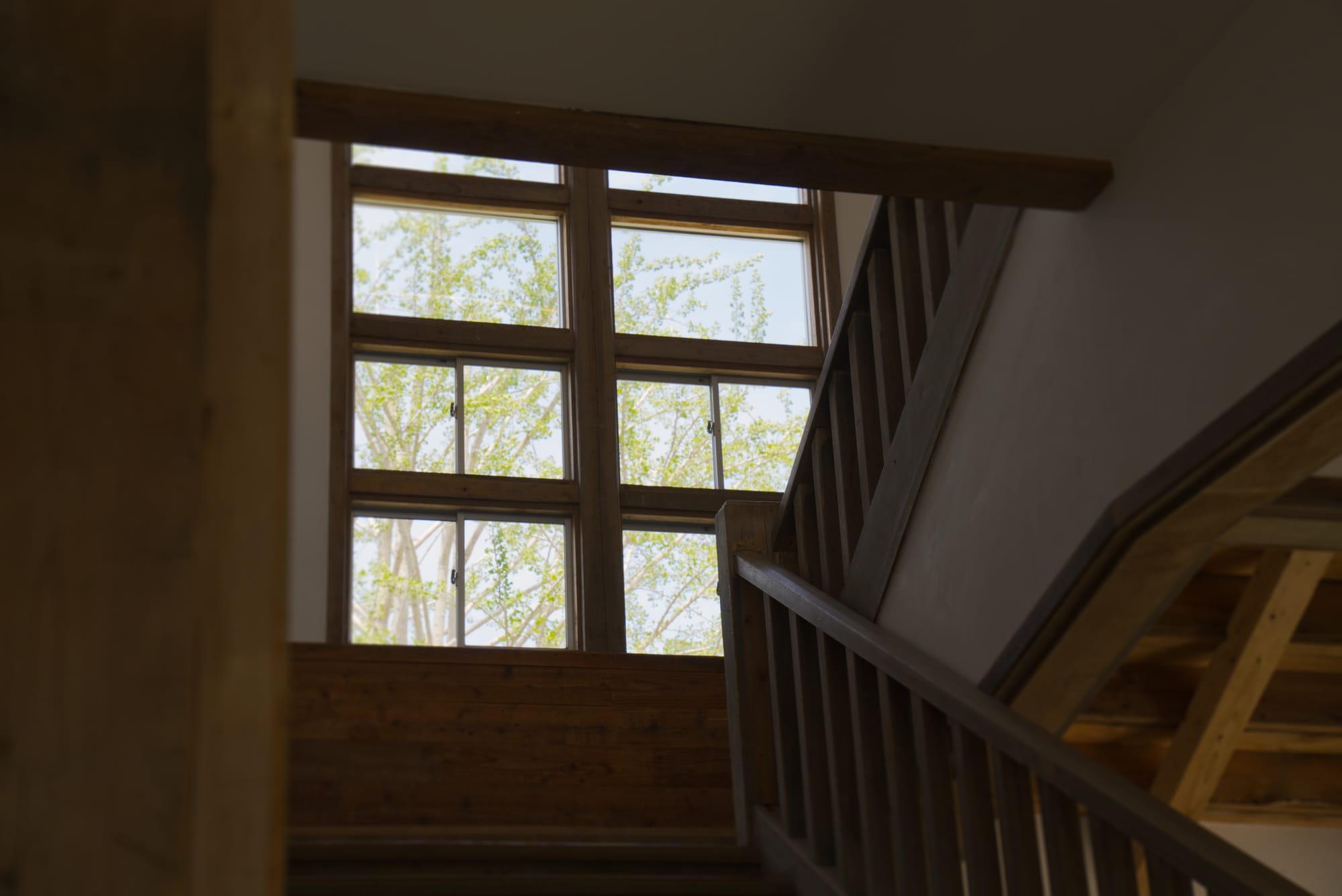
It’s still hard to view the director, or the pavilion, separate from the noted incidents that have seen Kawase face extensive scrutiny in recent years. These shouldn’t be overlooked. Yet away from the filmmaking spotlight, the time since has seen Kawase return to the intimate origins of her early work in an attempt to understand what brings humans closer together, and just how important that connection is at building a society through past, present and future. Just as the Expo brings strangers together, this early documentary places decades of stories and love through a lifetime into a smile and a heart that swells at the sight of someone who means so much.
Because at the end of the day, love and connection are what makes us human.
scrmbl's Classic Film Showcase shines a light on historical Japanese cinema. You can check out the full archive of the column over on Letterboxd.








